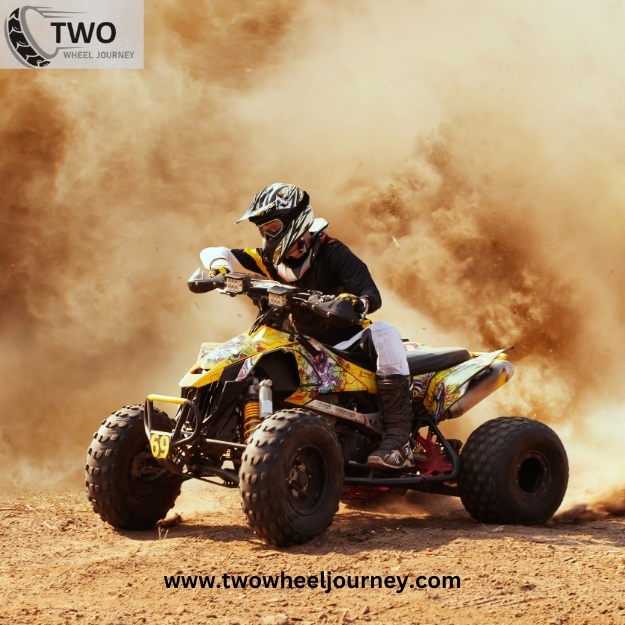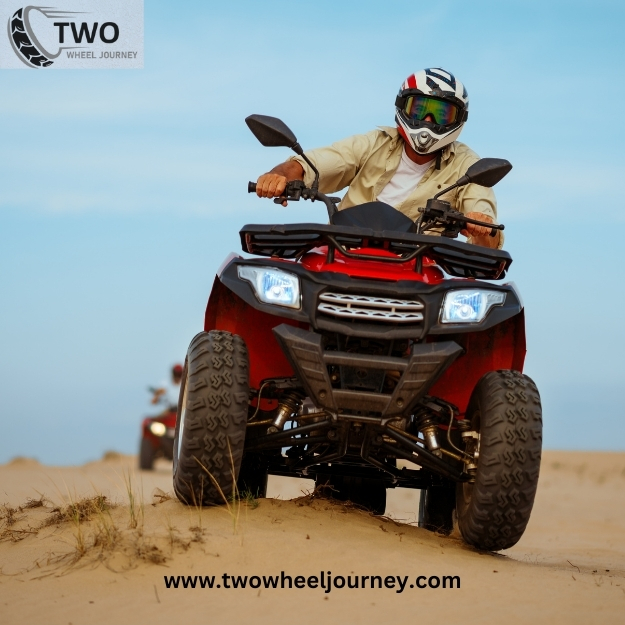Dirt bike training wheels enthusiasts, both young and old, embark on exhilarating adventures, traversing rugged terrains and conquering challenging trails. Yet, for those just starting, the thrill of off-road riding can be tempered by the daunting task of mastering balance and control on two wheels. It’s a journey filled with excitement, but also with a learning curve that demands patience and practice. Enter dirt bike training wheels – the unsung heroes of novice riders everywhere.
Picture this: a wide-eyed beginner, perched atop their trusty dirt bike, eager to explore the great outdoors. With training wheels firmly in place, they find stability and confidence, their trepidation giving way to excitement as they navigate the twists and turns of the trail. These simple yet invaluable attachments provide a safety net, allowing riders to focus on honing their skills without the fear of toppling over.
But dirt bike training wheels offer more than just stability; they represent the first steps towards independence and mastery of the off-road realm. As riders gradually outgrow their reliance on these training aids, they emerge as seasoned adventurers, ready to tackle new challenges with unwavering confidence.

Dirt Bike Training Wheels: Empowering Beginners for Off-Road Adventures
In this guide, we’ll delve into the world of dirt bike training wheels, exploring their benefits, types, installation processes, and maintenance tips. Whether you’re a beginner seeking to build your skills or a seasoned rider looking to assist a novice, join us as we uncover the secrets to mastering the art of off-road riding with confidence and flair. For more information visit here.
Table of Contents
Benefits of Using Dirt Bike Training Wheels
Stability and Balance
One of the primary benefits of dirt bike training wheels is the added stability they provide. By offering a wider base of support, training wheels help beginners maintain balance and control, reducing the likelihood of tipping over or losing control of the bike.
Confidence Boost
For riders just starting out, confidence is key to overcoming the initial challenges of dirt biking. Training wheels instill a sense of security, allowing beginners to focus on learning fundamental skills without the fear of falling. As riders gain experience and proficiency, they can gradually transition to riding without training wheels with newfound confidence.
Safety
Safety is paramount in any motorsport, and dirt biking is no exception. Training wheels act as a safety net, minimizing the risk of accidents and injuries during the learning process. By providing additional support and stability, they help prevent sudden falls and collisions, creating a safer environment for beginners to hone their skills.
Types of Dirt Bike Training Wheels
There are several types of dirt bike training wheels available on the market, each offering unique features and benefits tailored to different riding needs and preferences.
Bolt-On Training Wheels
Bolt-on training wheels are designed to be permanently attached to the dirt bike, providing a stable and secure foundation for beginners to practice riding. These training wheels offer maximum stability and are ideal for riders who are just starting out and require extra support.
Adjustable Training Wheels
Adjustable training wheels allow for flexibility in riding preferences, as they can be easily adjusted to different heights and angles. This versatility makes them suitable for riders of varying skill levels, allowing for gradual progression as confidence and proficiency improve.
Stabilizer Wheels
Stabilizer wheels are specifically designed to provide enhanced stability and control on challenging terrain. Equipped with advanced suspension systems and shock absorbers, these training wheels offer superior performance in off-road conditions, making them ideal for adventurous riders seeking to conquer rugged trails.
How to Choose the Right Dirt Bike Training Wheels
Selecting the right dirt bike training wheels is crucial for ensuring a positive learning experience and optimal performance on the trails. Consider the following factors when choosing training wheels for your dirt bike:
Consider the Rider’s Skill Level
Evaluate the rider’s skill level and experience to determine the appropriate type of training wheels. Beginners may benefit from bolt-on or adjustable training wheels, while more experienced riders may prefer the versatility and performance of stabilizer wheels.
Weight Capacity
Ensure that the training wheels are compatible with the weight capacity of the dirt bike. Choosing training wheels with a higher weight capacity than necessary can lead to instability and compromised safety, so it’s essential to select options that are suited to the rider’s weight and the bike’s specifications.
Durability
Invest in training wheels made from high-quality materials that can withstand the rigors of off-road riding. Look for durable construction and reliable components that can endure rough terrain and frequent use without compromising performance or safety.
Installing Dirt Bike Training Wheels
Installing dirt bike training wheels is a straightforward process that can be completed with basic tools and minimal mechanical knowledge. Follow these steps for proper installation:
Step-by-Step Guide
- Begin by placing the dirt bike on a flat, stable surface and ensuring that it is securely supported to prevent tipping.
- Remove the rear wheel of the dirt bike to access the axle and swingarm.
- Attach the training wheels to the designated mounting points on the swingarm, ensuring that they are securely fastened.
- Reinstall the rear wheel and tighten the axle nut to the manufacturer’s specifications.
- Adjust the training wheels to the desired height and angle, taking into account the rider’s preferences and skill level.
- Double-check all connections and fasteners to ensure proper installation and safety.
Tips for Proper Installation
- Refer to the manufacturer’s instructions for specific installation guidelines and recommendations.
- Use high-quality hardware and fasteners to ensure a secure and stable attachment.
- Test the stability and functionality of the training wheels before riding to ensure proper alignment and performance.
Maintaining Dirt Bike Training Wheels
Proper maintenance is essential for ensuring the longevity and performance of dirt bike training wheels. Follow these tips to keep your training wheels in top condition:
Cleaning and Lubrication
Regularly clean dirt and debris from the training wheels and associated components to prevent buildup and corrosion. Apply lubricant to moving parts and pivot points to ensure smooth operation and prevent premature wear.
Regular Inspection
Inspect the training wheels and mounting hardware regularly for signs of wear, damage, or loose connections. Tighten any loose fasteners and replace worn or damaged components as needed to maintain optimal performance and safety.
Riding Tips with Dirt Bike Training Wheels

Riding with dirt bike training wheels requires a combination of skill, technique, and caution. Follow these tips to make the most of your training wheel experience:
Practice in Controlled Environments
Begin by practicing in controlled environments such as empty parking lots or flat, open fields where you can safely hone your skills without obstacles or distractions. Gradually progress to more challenging terrain as you gain confidence and proficiency.
Gradual Progression
Take your time and focus on mastering basic riding skills such as throttle control, braking, and cornering before attempting more advanced maneuvers. Gradually increase the difficulty of terrain and obstacles as your skills improve, always prioritizing safety and control.
Utilizing Proper Riding Gear
Wear appropriate safety gear including a helmet, goggles, gloves, and protective clothing to minimize the risk of injury in the event of a fall or collision. Invest in high-quality gear that provides adequate protection and comfort for off-road riding conditions.
Removing Dirt Bike Training Wheels
Knowing when to remove dirt bike training wheels is essential for transitioning to independent riding. Look for the following signs of readiness before removing training wheels:
Signs of Readiness
- Consistent balance and control while riding with training wheels.
- Confidence in executing basic riding maneuvers such as turning, braking, and accelerating.
- Ability to maintain stability and control on flat and uneven terrain without relying heavily on training wheels for support.
Step-by-Step Removal Process
- Begin by assessing the rider’s readiness and confidence level to ride without training wheels.
- Gradually raise the height of the training wheels to reduce their contact with the ground and encourage independent balance.
- Practice riding in short bursts with the training wheels raised until the rider demonstrates consistent balance and control.
- Remove the training wheels completely once the rider feels comfortable and confident riding without additional support.
Common Mistakes to Avoid with Dirt Bike Training Wheels
While dirt bike training wheels can be valuable tools for beginners, there are some common mistakes to avoid to ensure a positive learning experience:
Skipping Proper Training
Avoid the temptation to rely solely on training wheels without investing time and effort in proper training and skill development. Take advantage of instructional resources such as riding schools and online tutorials to learn fundamental riding techniques and safety practices.
Neglecting Maintenance
Regular maintenance is essential for preserving the performance and safety of dirt bike training wheels. Neglecting routine cleaning, lubrication, and inspection can lead to premature wear and compromised functionality, increasing the risk of accidents and injuries.
Rushing the Learning Proces
Patience is key when learning to ride a dirt bike with training wheels. Avoid rushing the learning process or attempting advanced maneuvers before mastering basic skills. Focus on gradual progression and consistent practice to build confidence and proficiency over time.
In The End
Dirt bike training wheels serve as invaluable tools for beginners venturing into the world of off-road riding. By providing added stability, confidence, and safety, these training wheels empower riders to build their skills with ease and enjoy the thrill of dirt biking with peace of mind. With the right training wheels and proper guidance, novice riders can embark on an exciting journey of discovery and adventure, mastering the art of off-road riding one step at a time.










